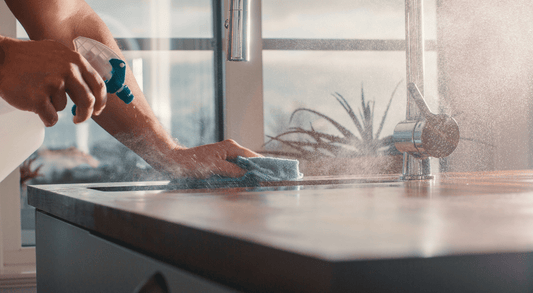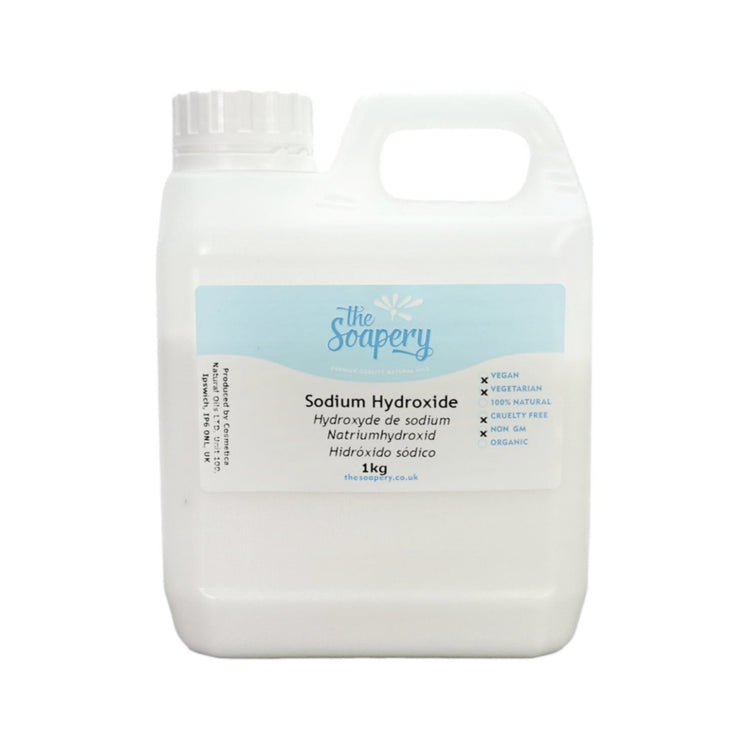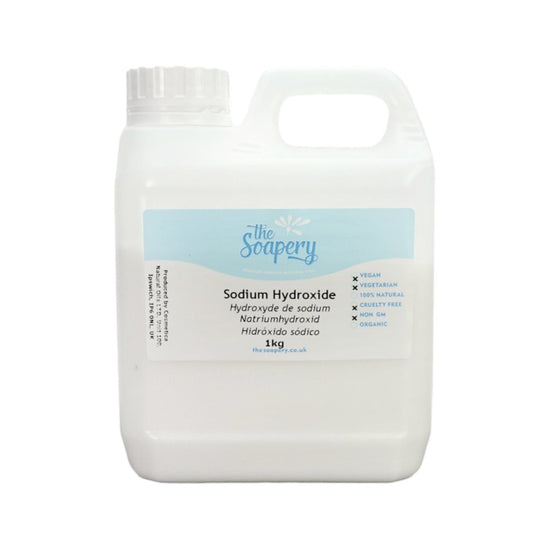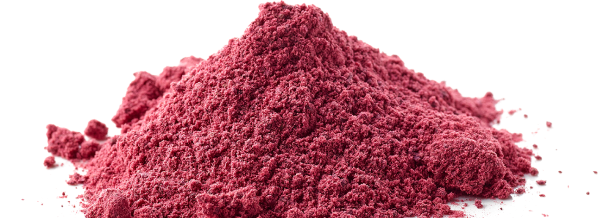
Sodium Hydroxide | Caustic Soda | Lye

- Regular price
- £6.95
- Sale price
- £6.95
- Regular price
-
Couldn't load pickup availability

What is sodium hydroxide?
Sodium hydroxide, also known as caustic soda or lye, is a highly alkaline chemical compound with the formula NAOH. Our caustic soda is a white powder.
Caustic soda is produced from salt water. Electricity is passed through the salt water, splitting it into hydrogen gas and sodium hydroxide.
It is used in many different products such as cleaning products and soap. Because of its high pH, it is very caustic and needs to be handled with care.
What is sodium hydroxide used for?
Sodium hydroxide is used in soap making and as a heavy duty cleaner.
Lye is used in soap making to break down the fat and oils. When lye and oils are mixed together, it creates a reaction called saponification. This reaction causes the oils and fats to break down into molecules of soap. Once the soap has been cured, there is no lye left in the final soap bar.
Lye, or caustic soda, is a popular cleaning product. It is often used to unblock drains, pipes and sinks. Simply add 100g of caustic soda to 1 litre of water, mix until dissolved and then pour into the blocked drain.
How to use sodium hydroxide for soap making
Caustic soda is used in cold process soap making to break down oils and fats to create soap molecules. Mix the lye into cold water, then blend the lye solution into your oils until the mixture starts to thicken.
Then pour into silicone soap moulds and leave to cure for 4 - 6 weeks. You can also add essential oils and colours to make your soap bar unique.
How to make soap without sodium hydroxide
A popular alternative to making soap without caustic soda is by using melt and pour soap bases. Melt and pour soap bases have already been through saponification, so there is no direct contact with caustic soda when using the soap base.
Sodium hydroxide is an essential ingredient in cold process soap making because an alkali solution is needed to react with the oil and fats to create the soap bar. It is simply not possible to make cold process soap without caustic soda (lye). However, it is a very hazardous substance that not everyone likes to work with.
Sodium hydroxide safety
Pure sodium hydroxide, also known as caustic soda, is a highly caustic substance that must be handled carefully. Contact with the skin will cause severe skin burns, and the inhalation of vapours can cause irritation. Keep out of reach of children and pets.
When handling caustic soda, make sure to follow the appropriate safety precautions and wear gloves, a mask, safety goggles and long-sleeves. Also ensure you are working in a well-ventilated room, otherwise you may need a respiratory mask.
When adding caustic soda to water it can become quite hot. Never add water to sodium hydroxide, always add sodium hydroxide to water. This helps prevent overheating and splashing of highly concentrated sodium hydroxide. Also make sure that you have adequate ventilation.
To clean up spills, make sure to either sweep up or use a hoover. Only use water to clean the area once the sodium hydroxide has been cleared up. Otherwise, you'll end up with caustic water to clean up, which is harder to deal with.
Sodium hydroxide reacts with some metals like aluminium, copper, tin and bronze. When it reacts, it produces hydrogen gas. This is highly flammable and potentially explosive. Make sure that your utensils aren't made out of these metals before you use them!
Steel, stainless steel, polyethylene and porcelain are safe materials for utensils and packaging. Do not mix caustic soda with any acid or oxidising agent, this can cause a dangerous and violent reaction.
When you're using caustic soda at home, make sure that everyone else at home knows you are handling caustic soda and that they shouldn't enter the room you are working in. If you're making soap in your kitchen, and you've dressed up with all the appropriate protective gear, you don't want any unprotected visitors popping in to make a cup of tea!
Make sure you don't mix your soap making tools with food preparation tools. Your soap making tools will have caustic soda residue on them and need to be washed thoroughly before they are safe to handle. But you won't want to cook with them!
Store your caustic soda in a cool, dry place. Make sure that the caustic soda is in its original packaging, with the hazard label visible. Don't decant it into an unlabelled container, that's asking for trouble!
Caustic soda is a hazardous and corrosive substance and needs to be handled with care.
Sodium Hydroxide MSDS
To view the MSDS click here.




